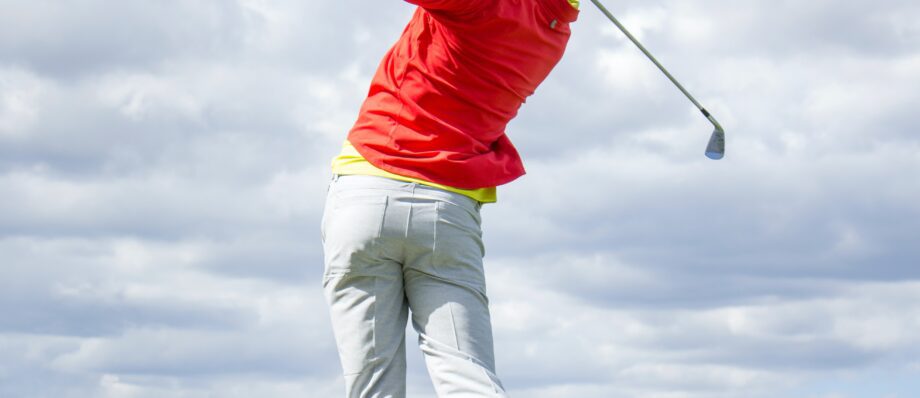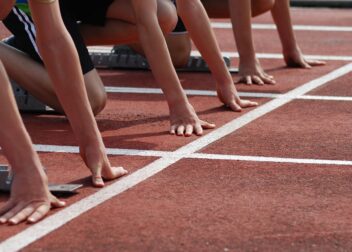The Power of Muscle Memory
- 12/02/2023
- College Recruiting, Personal Trainer, Strength Coach
- 8 mins read
Mastering the Art of Athletic Excellence:
Table of Contents
ToggleThe Power of Muscle Memory Unveiled
Introduction
Hey there, hopeful college athletes! Today, we’re diving deep into the world of muscle memory – that remarkable phenomenon that transforms the way we move, play, and conquer the game.
This blog post is thrilled to unravel the secrets behind this unsung hero of athletic mastery. So, buckle up your sneakers and cleats, because we’re about to explore the fascinating world of muscle memory.
Decoding Muscle Memory
Picture this: You shoot a basketball effortlessly into the hoop, execute a perfect golf swing, or smoothly perform a complex dance routine. That, my friends, is muscle memory in action.
Muscle memory is the body’s ability to repeat a specific movement without conscious effort, acquired through consistent practice and repetition.
It’s like your muscles have their own playbook, and they know exactly which moves to pull off without you having to think twice.
Why Muscle Memory Matters
Efficiency in Action
Think of muscle memory as your body’s shortcut to efficiency. When a movement is repeated, the brain forms neural pathways dedicated to that specific action. Over time, these pathways become more efficient, requiring less conscious thought and effort to execute.
Efficiency means you can perform at your best without feeling mentally drained.
Consistency and Precision
For athletes, consistency is the name of the game. Whether you’re sinking three-pointers or acing that backhand, (MM) ensures that your movements remain consistent and precise.
It’s the secret sauce behind repeatable success on the field, court, or stage.
Rapid Decision-Making
In the heat of the game, split-second decisions can make all the difference. (MM) allows athletes to react quickly and instinctively, relying on honed movements rather than getting bogged down by overthinking.
It’s the difference between a hesitation and a game-winning move.
Muscle Memory
Developing Superior (MM)
Repetition, Repetition, Repetition
There’s no escaping the power of repetition. It’s the backbone of (MM) development.
Whether you’re perfecting a golf swing or a throwing motion, the key is consistency, intentional repetition.
This sends a clear message to your muscles: “This is important, remember it!”
Mindful Practice
Quality trumps quantity when it comes to developing muscle memory. Mindful practice involves focused, deliberate repetitions with an emphasis on precision.
It’s about training with intention, paying attention to form, and making each repetition count.
Break It Down
Athletes often face complex movements. Breaking down these movements into smaller, digestible parts allows for targeted practice.
Mastering each component before putting it all together ensures that your (MM) foundation is rock solid.
Tailoring Muscle Memory for Specific Sports
The Swish of Success in Basketball
For hoop dreams to become reality, basketball players focus on shooting drills, dribbling exercises, and simulated game scenarios.
Repetition of free throws, layups, and three-pointers fine-tunes (MM), ensuring accuracy during those nail-biting moments.
Golf’s Perfect Swing
Golfers understand the intricacies of a flawless swing. Muscle memory is cultivated through repetitive practice swings, drills to improve club control, and mastering the putting green.
Each swing becomes second nature, leading to more consistent and powerful shots.
Dance Like Nobody’s Watching
Cheerleaders, too, rely on (MM) to glide effortlessly across the field or court.
Choreographing cheer routines involves breaking down movements, practicing each step, and gradually building up to a seamless performance.
The result? Graceful movements that captivate the audience.
Muscle Memory
The Trainer’s Toolbox: Techniques for Optimal (MM)
Visualization Techniques
Personal trainers and coaches, often encourage athletes to visualize their movements. Mental imagery strengthens neural connections, reinforcing the messages sent to the muscles during physical practice. It’s like a mental rehearsal that primes the body for success.
Varied Training Stimuli
Muscle memory thrives on diversity. Introducing varied training stimuli challenges the body to adapt to different scenarios.
Athletes can incorporate cross-training, unconventional drills, and adaptive exercises to keep their muscles sharp and responsive.
Incorporating Feedback Loops
Constructive feedback is the compass guiding athletes on their journey to superior muscle memory. Utilizing video analysis, performance assessments, and real-time feedback during training sessions helps athletes understand their strengths and areas for improvement.
The Business of Better Performance
Athletes and the Business Game
For athletes, the business side of sports is becoming increasingly relevant. Endorsements, sponsorships, and participation in elite leagues bring not only fame but also financial opportunities.
Muscle Memory
Muscle memory ensures that every on-field performance is a potential highlight reel, enhancing an athlete’s marketability.
The Rise of the Athlete Entrepreneur
In the age of social media and personal branding, athletes can leverage their skills and persona for entrepreneurial ventures.
The precision and consistency ingrained by muscle memory extend beyond the field, creating a disciplined mindset crucial for success in business pursuits.
Beyond the Field: Professional Endeavors
Life After Competitive Sports
Retirement from competitive sports doesn’t mean bidding farewell to muscle memory. Athletes can channel their honed skills into coaching, mentoring, or sports commentary. The muscle memory developed over years becomes a lifelong asset, opening doors to fulfilling post-athletic careers.
The Science Behind Muscle Memory:
The Molecular Ballet of Muscle Contraction
Understanding muscle memory requires us to peer into the microscopic world of cellular activity.
At its core, muscle memory hinges on the intricate dance of proteins within our muscle fibers.
Actin and Myosin Interaction
Our muscles contract when the proteins actin and myosin lock together, creating a force that shortens the muscle fiber.
Through repetitive movements, this interaction becomes more efficient.
Picture actin and myosin as dance partners—constant practice refines their choreography, making each performance smoother and more coordinated.
Neurotransmitters and Motor Units
For the muscles to contract, signals from the brain travel down the spinal cord and prompt the release of neurotransmitters at the neuromuscular junction.
These neurotransmitters stimulate muscle fibers, forming motor units. With repeated activation, the communication between nerves and muscles becomes streamlined, facilitating quicker and more precise movements—an essential aspect of muscle memory.
The Role of Neural Plasticity
Neural plasticity, the brain’s ability to adapt and reorganize itself, plays a pivotal role in the development of muscle memory. Let’s have a look into the neuroscience behind this phenomenon.
Synaptic Changes
As athletes practice certain movements, the connections between neurons, known as synapses, undergo changes.
This involves strengthening the existing synapses and even creating new ones. The brain essentially rewires itself, optimizing the communication pathways related to the specific motor skill being practiced.
Gray Matter Density
MRI studies have shown that areas of the brain associated with motor control, like the primary motor cortex, exhibit changes in gray matter density with repeated practice by athletes.
This structural adaptation reflects the brain’s commitment to refining the neural circuits responsible for the practiced movement.
The Biochemical Symphony
Beneath the surface, a biochemical symphony orchestrates the magic of muscle memory. The interplay of various molecules and signaling pathways contributes to the long-lasting changes in muscle cells.
Muscle Memory
Protein Synthesis and Gene Expression
Repetitive training stimulates the synthesis of specific proteins crucial for muscle function.
This process involves gene expression—certain genes become more active, encoding proteins that enhance muscle contraction and endurance.
The body essentially adapts its molecular machinery to better suit the demands of the practiced activity.
Mitochondrial Adaptations
Mitochondria, the powerhouses of our cells, undergo changes in response to repeated exercise. These adaptations enhance energy production and utilization, contributing to the increased stamina and endurance seen in individuals with well-developed muscle memory.
Breaking Down the Chemical Wall
To truly grasp muscle memory, we must understand the chemical underpinnings of memory formation within our muscle cells.
Calcium Ion Sensitivity
The binding of calcium ions to proteins within muscle cells triggers the contraction process.
Through repetition, these proteins become more sensitive to calcium ions, resulting in a heightened responsiveness of the muscle to neural signals.
This enhanced sensitivity is a testament to the adaptive nature of muscle memory.
Neurotransmitter Efficiency
The efficiency of neurotransmitters, such as acetylcholine, at the neuromuscular junction is a critical factor in muscle memory.
With consistent practice, the release and reception of these neurotransmitters become more precise and streamlined, allowing for quicker and more accurate signal transmission between nerves and muscles. Athletes react quickly and instinctively (fast twitch).
Practical Tips for Maximizing Muscle Memory
Let’s explore actionable steps high school athletes can take to optimize the development of muscle memory.
Progressive Overload
Gradually increasing the intensity of your workouts through progressive overload stimulates the adaptive changes required for muscle memory.
This could involve adding weight, increasing repetitions, or adjusting training variables over time.
Mindful Practice
Mindfulness during practice enhances the connection between mind and muscle. Focused, intentional movements engage the neural circuits more effectively, reinforcing the pathways associated with muscle memory.
Varied Training Stimuli
Introducing variety into your training routine challenges your muscles in different ways. This not only prevents monotony but also encourages the development of a more robust and adaptable muscle memory.
Conclusion: The Symphony of Muscles
So there you have it, the intricate world of muscle memory unveiled. It’s the unseen force propelling athletes toward excellence, enhancing efficiency, and ensuring that every move is a masterpiece.
The next time you engage in repetitive movements during your training, envision the microscopic ballet occurring within your muscle fibers and the neural circuits of your brain.
Embrace the symphony, and let muscle memory be your guide on the journey to athletic excellence.
As you lace up your shoes for your next training session, remember, muscle memory isn’t just a tool; it’s your secret weapon for conquering the game, the course, and everything in between. Keep moving, keep repeating, and let your muscles remember the path to greatness!
If you would like to learn about our recruiting services, click the link below to get started…



